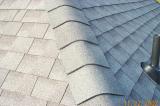 The word “myth” has historically referred to traditional or legendary stories that explained how something works or why it exists. When one thinks of myths or mythology it brings to mind larger-than-life Greek or Roman Gods and fantastic stories that explained why the sun rises and sets to the peoples of the time.
The word “myth” has historically referred to traditional or legendary stories that explained how something works or why it exists. When one thinks of myths or mythology it brings to mind larger-than-life Greek or Roman Gods and fantastic stories that explained why the sun rises and sets to the peoples of the time.
It’s generally understood that when something is labeled a “myth” that it is a commonly held belief in something that has no basis in fact. While it has mostly referred to religious and cultural beliefs that are now understood to be incorrect, it has spread to cover non-religious beliefs as well. Where today any misunderstood belief or rumor can be labeled a myth and it is understood that the statement is false.
Every industry has their myths and “old wives tales” and roofing is no exception. It is the responsibility of those in the industry to dispel these myths so that customers understand the truth about the product they purchase.
Myth: All asphalt Shingles are basically the same
This statement cannot be further from the truth. Especially today, asphalt shingles come in all kinds of types and quality, from the low-end recycled 3-tab shingles to higher end laminated, coated, designer shingles with lifetime warranties. Some shingles are made to combat specific problems other shingles are made to look like wood shakes or even slate tiles. When choosing a shingle, don’t just go with whatever looks good or is cheaper, be sure the shingle you choose is the best shingle for your home and budget.
Myth: It’s OK to cover an existing layer of shingles with a new layer
In Georgia, it isn’t legal to do this any longer, yet in other areas it may be permitted by building codes, but it is never a good idea. Adding a new layer over a bad layer of shingles only hides problems. Beneath the shingles is a layer of wood sheathing, usually plywood. This layer becomes damaged once the shingle layer stops working correctly. Rotting begins because of leaks, inadequate ventilation, and age. If the shingles need to be replaced, it’s usually a good idea to make sure this layer is in good shape as well and the best way to do this is strip away the old shingles. Without checking this layer, it’s quite possible you’ll end up replacing the entire roof sooner rather than later because damage went unnoticed.
Myth: The more insulation and ventilation the better.
Insulation and ventilation needs to be balanced according to the needs of the building. Too much insulation can block openings at the soffits and eaves trapping moisture which can warp and rot sheathing from the attic interior and can cause mold. Too little and you may as well not have any.
Proper ventilation eliminates moisture buildup and maintains a steady attic temperature in both cold and warm seasons. Too little ventilation can cause ice-damming, mold on the sheathing, even frost accumulation and moisture inside that resembles leaks. Too much ventilation and you are wasting energy.
There is a balance between insulation and ventilation that every roof contractor worth their salt takes into account using a specific formula . So the answer to the question “How much insulation and ventilation?” the answer is “just enough for your specific situation”.
Myth: Gutters are not part of the roofing system and are considered separate
Gutters are not considered just a part of the roof but perhaps the most important part. Your roof is designed to route water away from a structure, gutters are the final piece of this process as they take all that routed water and route it away from the wall and foundation to an area where it won’t damage the building or home. This is why many new roofs can include new gutters and downspouts.
Atlanta Roofing Specialists is an A+ Better Business Bureau rated roof contractor serving Metro Atlanta residential and businesses since 1993. In Metro Atlanta, call 770-419-2222 for a free estimate today!
